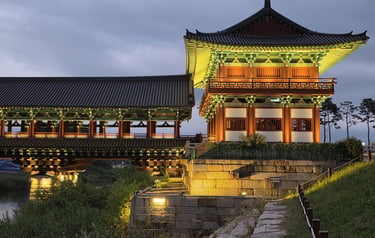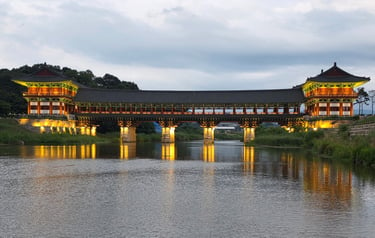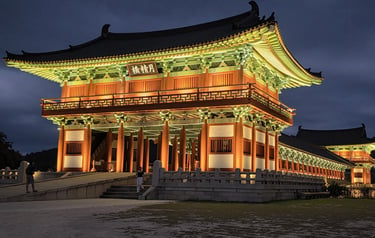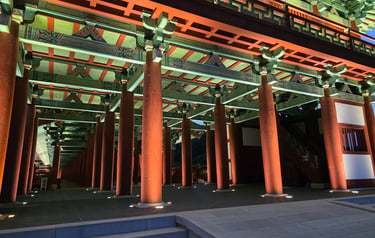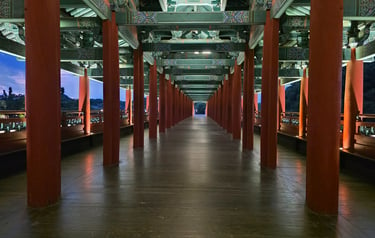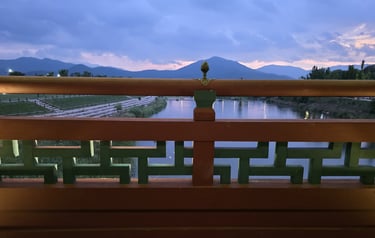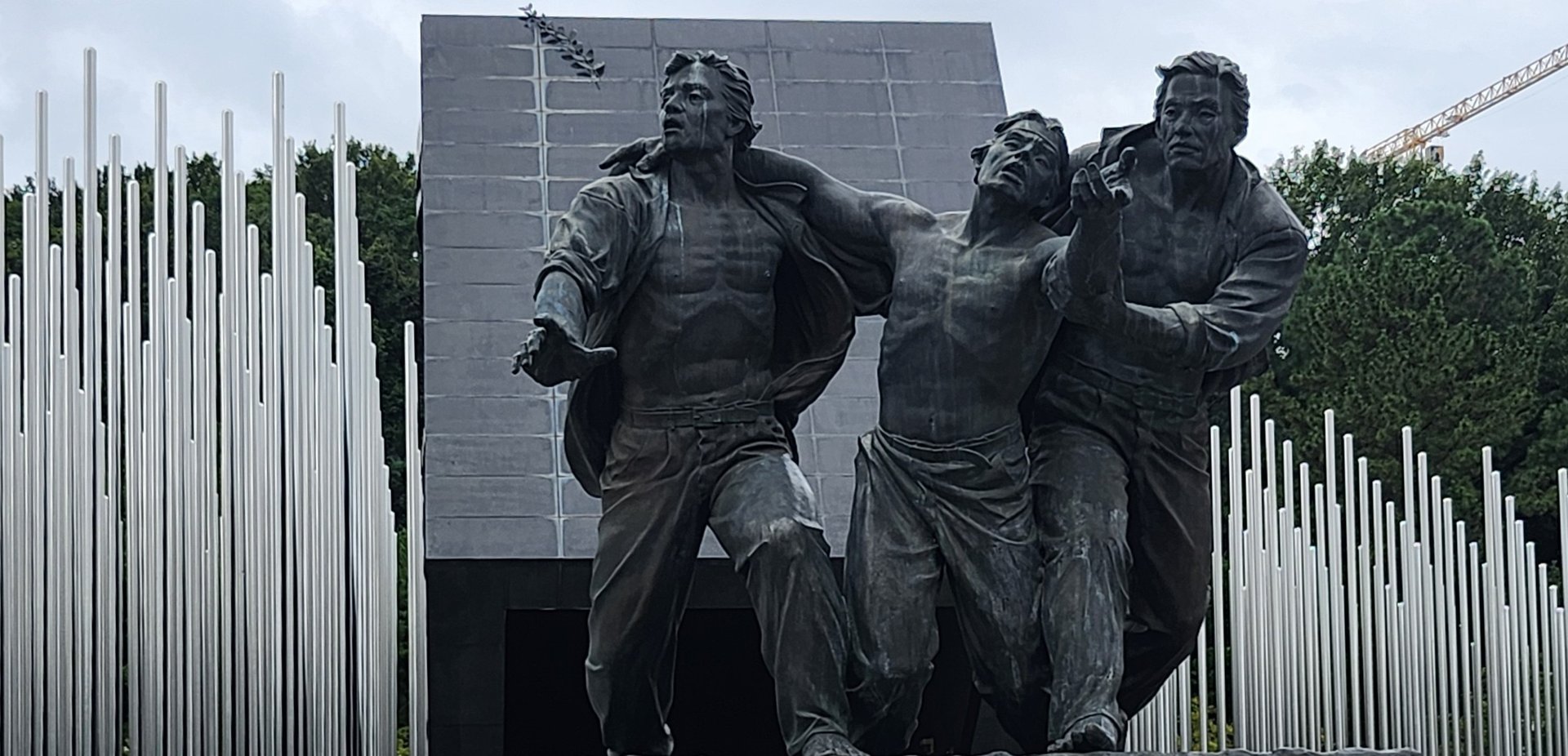
Other Cultural Sites
Cheomseongdae Observatory
Cheomseongdae Observatory is one of a vast range of cultural heritage sites in the city of Gyeongju, which was the capital during the Silla (57 BCE – 676 CE) and Unified Silla (676-935 CE) periods. It is a part of the Wolseong Belt - one of five groupings that make up the UNESCO Gyeongju Historic Sites inscription.
Cheomseongdae is an astronomical observatory that was built during the Silla period and, according to the Korea Heritage Service website, it is in fact the oldest astronomical observatory in Asia at over 1,400 years old. It is made of stone and stands at a height of around 9 metres by less than 6 metres at its widest point, making it much smaller than other sites that make up the Gyeongju Historic Areas. Cheomseongdae is very unusual in that it is rare to see surviving astronomical observatories, so it is well worth a visit – even more so because it is also very close to other sites in the Wolseong Belt and the many burial mounds that make up another of the five UNESCO groupings, the Tumuli Park Belt.
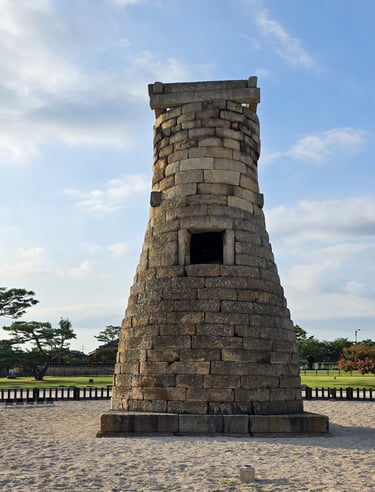

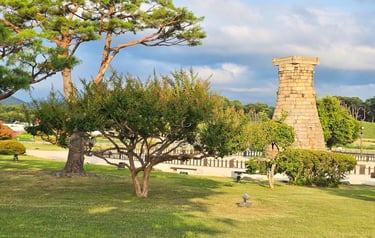

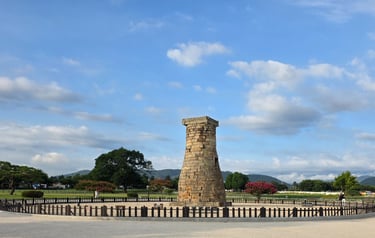

Gungnamji Pond
Gungnamji Pond is a beatiful historic pond and garden located in Buyeo. It was built in 634 CE during the reign of King Mu of the Baekje Kingdom and is Korea's oldest manmade garden. The garden area is huge, with lots of winding paths surronded by plants and trees, and in some areas there are lotus plants as far as the eye can see. The pond was originally associated with a palace, but only a few remnants of the palace remain today. Within the garden there is a pond and at the centre of the pond is a small island with a recently constructed pavilion and bridge. Gungnamji Pond is a great place to have a relaxing walk. There are plenty of seating areas around to take a break and there is lots of wildlife too. The area is particularly beautiful when the water lillies are in bloom and there are lots of places, both natural and made, for photo opportunities.
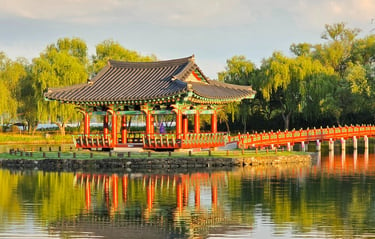

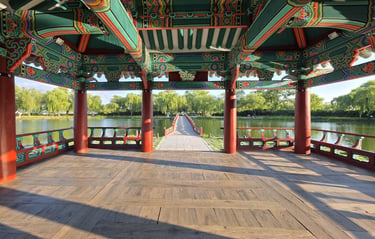

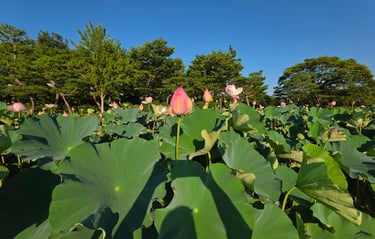

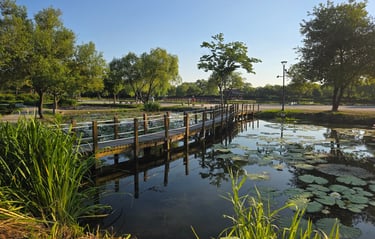

Jeonil Building 245
Jeonil Building 245 in Gwangju looks just like many other buildings. It has several floors and a communal entrance that details the different occupants. Looking at this list, it becomes clear that there is a definite focus on culture and tourism. Look a little further and it becomes clear that the building has some direct relevance to recent historical events. Today, those events are known by different names - the Gwangju Uprising, the May 18 Democratization Movement, the May 18 Gwangju Democratization Movement, the Gwangju Democratization Struggle, or simply 5.18. The Jeonil Building 245 is central to that struggle. A military helicopter opened fire on the building on 18 May, 1980, but this event was denied for many years, until in 2018, an investigation of documents and interviews with military personnel led a Ministry of National Defense committee to confirm that these events did take place. Today, physical evidence of these events can clearly still be see in the Jeonil Building 245 in the form of concrete building supports and other internal fittings riddled with hundreds of bullet holes.
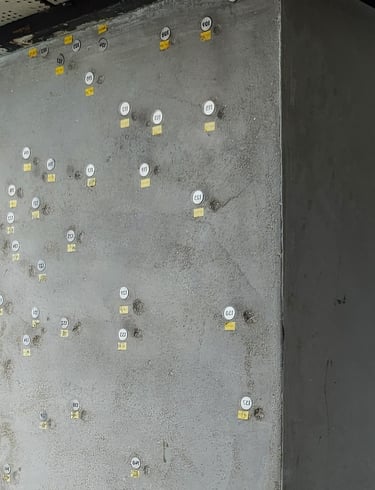

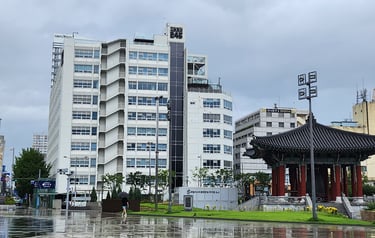

The centre focusing on these events is split over different floors, with sections focusing on various aspects. Personal diaries are displayed, allowing visitors an understanding of the thoughts and feelings of individuals, including children, and four of those diaries have been inscribed into the UNESCO Memory of the World Archives. As you walk through the centre you can see bullet holes in various locations, each one given a number and yellow ID sticker. There is also military personnel testimony, pictures of concurrent events at various locations in Gwangju, a city model with audio and spotlight interpretation, details of censorship and comments from journalists, and information relating to the Fighters Bulletin, which was written by teachers and school children. There are also other locations around the city that commemore the May 18 events, such as the May 18 Memorial Centre, the Bell of Democracy (right across the road from Jeonil Building 245) and 5.18 Memorial Park, which commemorates the many people who lost their lives. There you will find various artworks dedicated to the memory of the uprising, pictures of events, and a long and solemn list of names commemorating the dead.
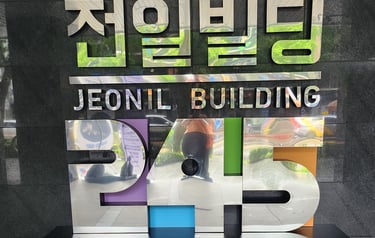

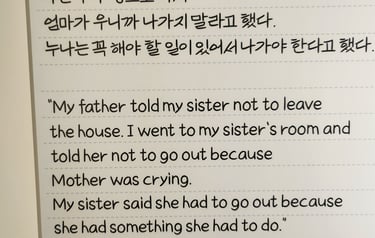

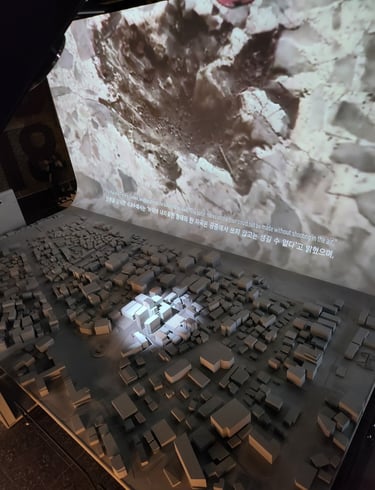

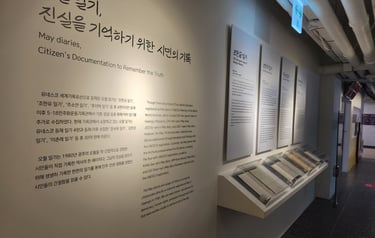

Seokguram Grotto
Seokguram Grotto is located on Tohamsan Mountain and is associated with Bulguksa Temple, although it is some distance away. Both sites are combined as one inscription on the UNESCO World Heritage List. The grotto was constructed during the Silla period, between 751 and 774 and is manmade, being constructed using granite. There are three inner areas which are a small room or antechamber, a main area and a corridor connecting the two. Inside the main area is a huge Buddha statue, and surrounding the statue, images include gods and Bodhisattvas. To view the grotto, visitors need to take a walk of around 10 minutes from the site car park to reach the grotto building. The Buddha and surrounding images are truly stunning to view but please note that it is not possible to expore the inner area that contains these items as it is protected by a viewing pane. It is also not possible to take pictures or record video. The small visitor section acts more as a walk through area, so please be aware that it is not really somewhere to stop for any great length of time. Despite this, the site is still well worth a visit. Visiting during off-peak times is highly recommended so that there is no pressure to move quickly through the viewing area.
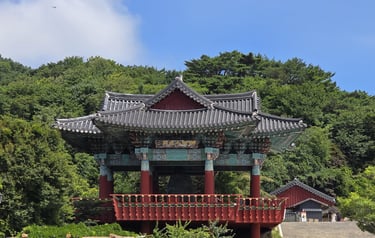

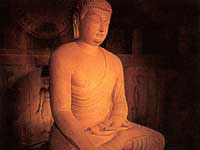

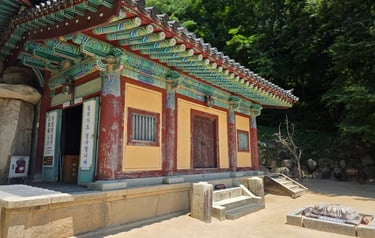

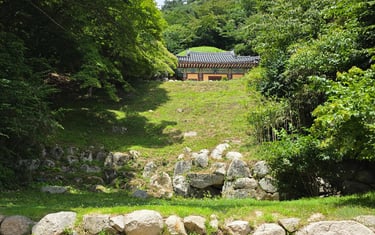

The Buddha photograph shown was created by the Korea Heritage Service in 2006 and used in their ‘World Heritage' pages. The image can be downloaded for non-commercial use for free at https://english.khs.go.kr/.
Uam Historic Park
Uam Historic Park in Daejeon was built to commemorate Uam Song Si-yeol (1607-1689), a Joseon scholar and government official. He had a number of buildings constructed for educational and research purposes and some of these buildings have been restored to form the focus of the park. On some you can see Korean Dancheong, a colourful method of painting used to decorate many wooden buildings. Other buildings are decorated more simply. Whatever the decoration, be it paint style, motifs, end tiles or wooden window panels, the buildings in Uam Historic Park are wonderful examples of Joseon Dynasty architecture. There is also a small memorial hall dedicated to Uam Song Si-yeol that displays a number of his belongings and writings. The park is relatively small compared to some of the main cultural heritage sites, so you do not need a huge amount of time to walk around. It also does not get as busy as some other sites, so there are excellent photo opportunities. If you visit in the warmer weather, there are also seating areas to take a break and a grass area that is perfect for a picnic.
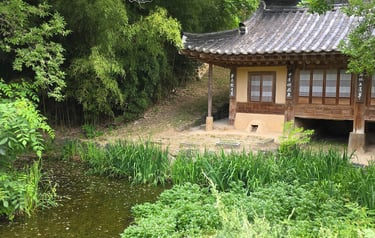

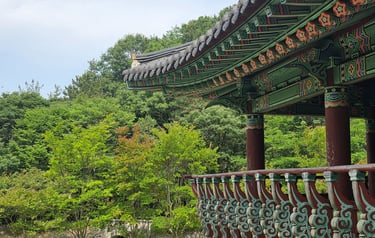

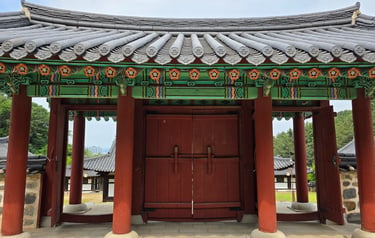

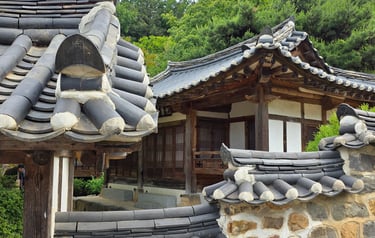

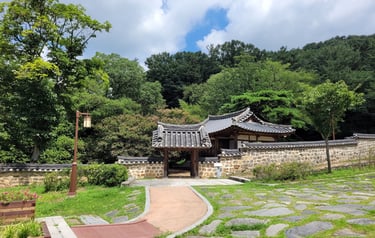

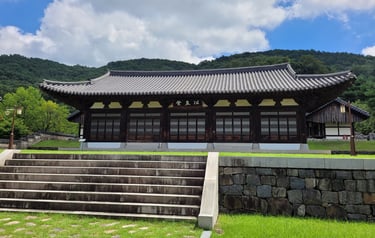

Woljeonggyo Bridge
Woljeonggyo Bridge sits over Namcheon Stream, also known as Muncheon Stream, in the city of Gyeongju. However, the Woljeonggyo Bridge we see today is not the original bridge. It is a reconstruction based on archaeological evidence found relating to the original Unified Silla (676-935 CE) period bridge. The present day bridge was constructed during a 2008 to 2013 restoration project and then in 2018 the two gatehouses were completed. The purpose of the original bridge was to connect Wolseong Palace with Namsan Mountain. Today you can walk over the bridge to view its stunning design and even go up to the second floor of one of the gatehouses to learn more about the reconsutruction process. Late evening or night visits, when the sun is setting or has set, are highly recommended as it looks particulary beautiful when the sky is dark and the bridge is lit up. If you arrive when it is still light but want to wait until the sun sets, then there are a number of coffee shops and restaurants on one side of the stream, whilst there are seating areas on both sides. There are also stepping stones that allow you to cross the stream at a distance from the bridge, or as in the first picture, to take centred photographs of the whole bridge including gatehouses.
